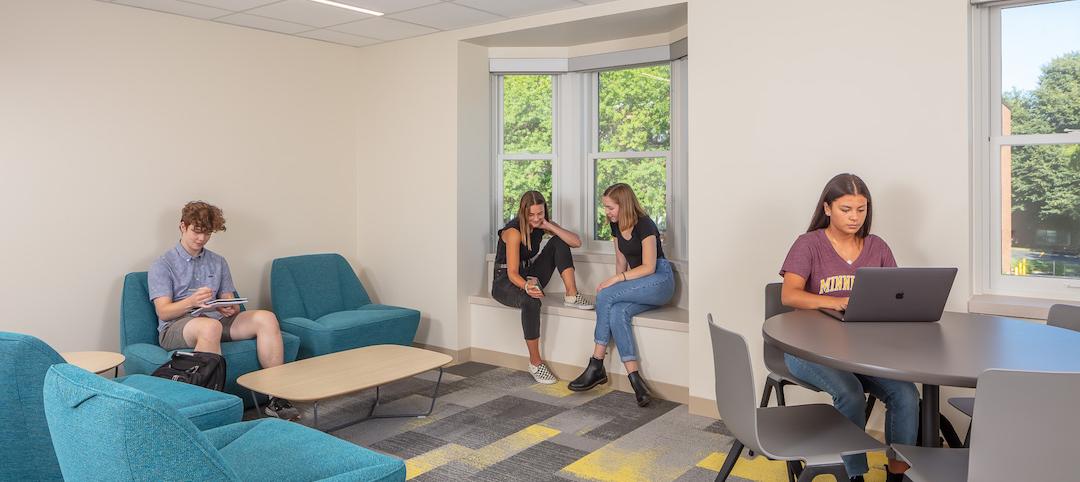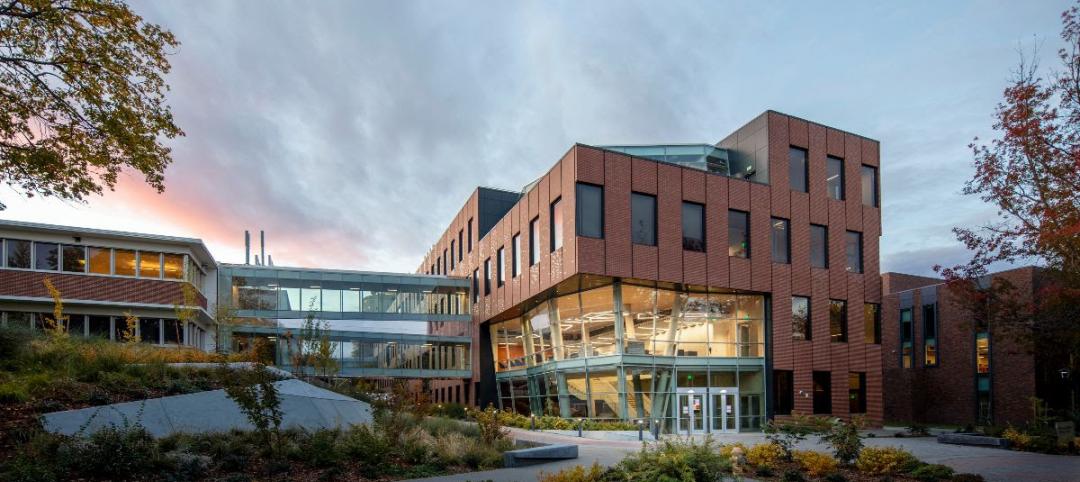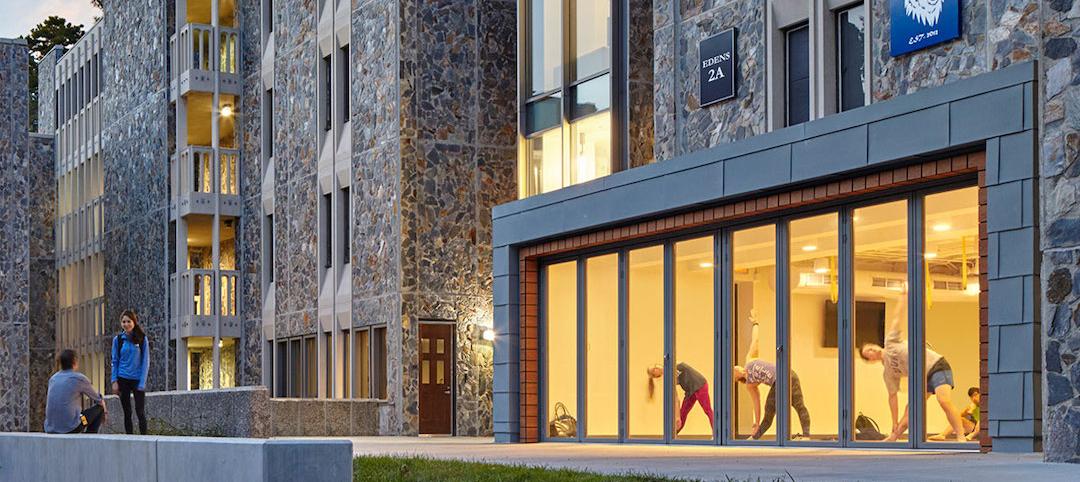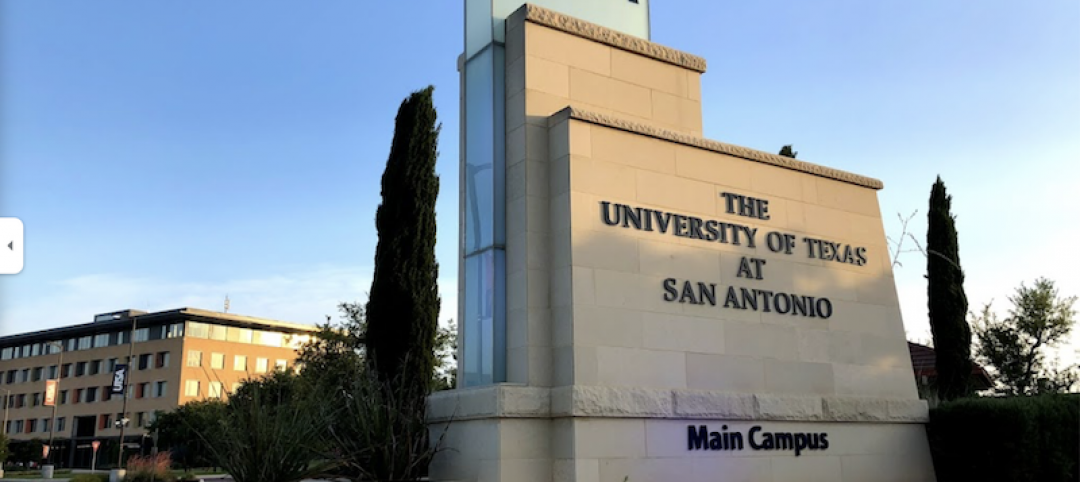The hope was that a complete restoration and modernization would bring life back to three neoclassic beauties that formerly served as Phoenix Union High School—but time had not treated them kindly. Built in 1911, one year before Arizona became the country's 48th state, the historic high school buildings endured nearly a century of wear and tear and suffered major water damage and years of termite infestation that severely compromised their wood-frame interior structures. There was considerable hand-wringing over how much of the three-story buildings could be salvaged.
After extensive review, the Building Team devised a $19.6 million program where all three buildings would be saved and reborn as the 84,435-sf University of Arizona College of Medicine. It was precisely that concern for rescuing the trio of buildings that caught our judges' attention. “Reusing three buildings is quite significant. It just isn't something you think to do too often,” says Walker C. Johnson, FAIA, principal at Johnson Lasky Architects in Chicago.
Only one of the three buildings was discovered to be structurally unsound. Its entire wood-frame interior was dismantled and replaced with a steel-frame system. To protect its historic masonry shell, all the work had to be performed through the building's existing window openings. The other two buildings were shored up as necessary, and all three were fitted with new operable, insulated, and historically sensitive windows.
Another concern focused on how best to fit the necessary classroom space and technology required of a 21st-century medical college into turn-of-the-20th-century buildings. When it was discovered that up to 40% of the buildings' available space would be sacrificed to staircases, elevators, and bathrooms (each floor plate is approximately 7,000 sf), the decision was made to locate those elements in newly constructed space—two modern glass “outhouses” (translucent glass wrapped about masonry cubes) connected by glass bridges to two of the buildings. “The additions are unique architectural solutions that don't draw the focus away from the original buildings,” says Jeff Pratt, principal at KJWW Engineering Consultants, Naperville, Ill., and one of BD+C's Reconstruction Award judges.
Additional interior reconfiguration focused on the building's auditorium. While the state's Historic Preservation Office (which had to approve all work) would have liked the auditorium completely restored, the university needed to borrow some of the space for much needed classrooms.
A compromise was reached and a building within a building was erected: one half the space is still used as the auditorium while the other half is classroom space for the state-of-the-art T-Health (telehealth and telemedicine) program. The walls can easily be removed, the space dismantled, and the auditorium returned to its original size. This design feature was lauded by juror K. Nam Shiu, VP at Walker Restoration Consultants, Elgin, Ill., who said, “The work done on the interior is very forward-thinking.”
Related Stories
Education Facilities | Jan 5, 2022
Student housing for Gen Z students will emphasize digital technology and ‘alone together’ spaces
As digitally engaged as Generation Z is, they still value and desire in-person communication and socialization.
2021 Building Team Awards | Nov 17, 2021
Caltech's new neuroscience building unites scientists, engineers to master the human brain
The Tianqiao and Chrissy Chen Institute for Neuroscience at the California Institute of Technology in Pasadena wins a Gold Award in BD+C's 2021 Building Team Awards.
Designers / Specifiers / Landscape Architects | Nov 16, 2021
‘Desire paths’ and college campus design
If a campus is not as efficient as it could be, end users will use their feet to let designers know about it.
Higher Education | Oct 26, 2021
The Interdisciplinary Science Center at Eastern Washington University completes
LMN Architects designed the building.
Cladding and Facade Systems | Oct 26, 2021
14 projects recognized by DOE for high-performance building envelope design
The inaugural class of DOE’s Better Buildings Building Envelope Campaign includes a medical office building that uses hybrid vacuum-insulated glass and a net-zero concrete-and-timber community center.
Higher Education | Sep 30, 2021
How design can support student wellness on higher ed campuses
Over the last year, the pandemic has spotlighted the importance of promoting student well-being through a holistic system of environments and resources.
Laboratories | Aug 31, 2021
Pandemic puts science and technology facilities at center stage
Expanding demand for labs and life science space is spurring new construction and improvements in existing buildings.
Giants 400 | Aug 30, 2021
2021 Giants 400 Report: Ranking the largest architecture, engineering, and construction firms in the U.S.
The 2021 Giants 400 Report includes more than 130 rankings across 25 building sectors and specialty categories.
Higher Education | Aug 30, 2021
The University of Texas at San Antonio combines its colleges of engineering and architecture
LPA Architects’ local office pushed for this to better prepare students to meet climate change challenges.
Giants 400 | Aug 26, 2021
2021 University Giants: Top architecture, engineering, and construction firms in the higher education sector
Gensler, AECOM, Turner Construction, and CannonDesign head BD+C's rankings of the nation's largest university sector architecture, engineering, and construction firms, as reported in the 2021 Giants 400 Report.
















